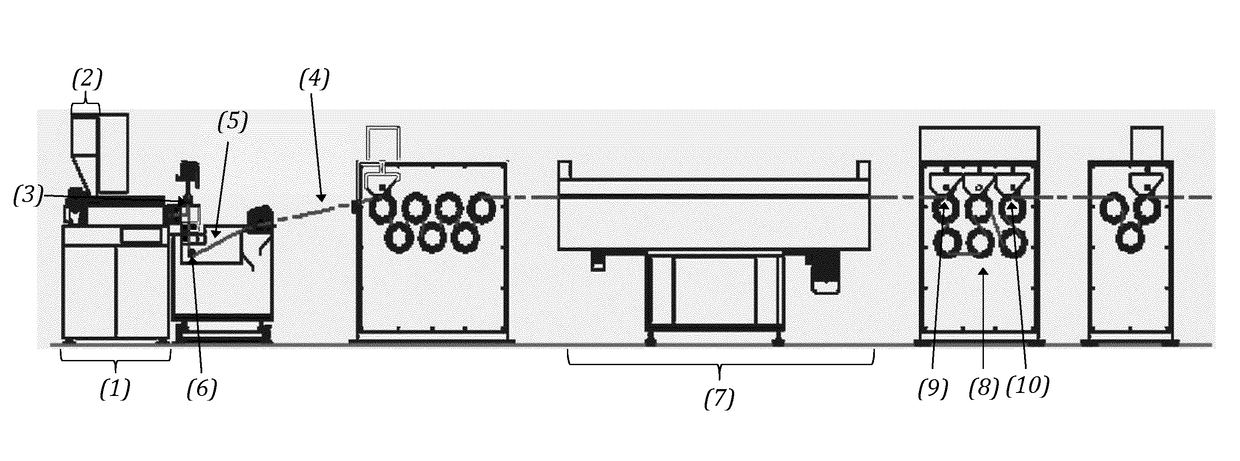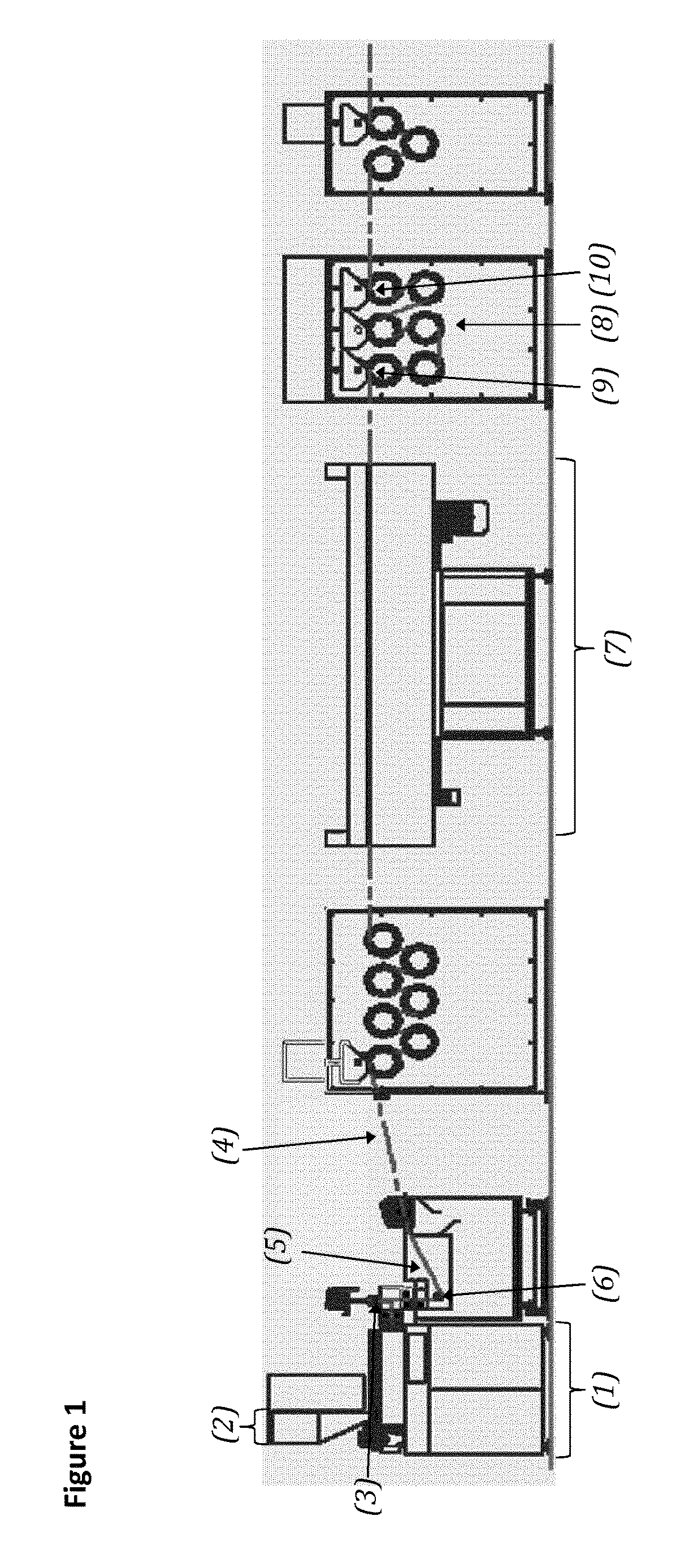Improved polypropylene fibers, methods for producing the same and uses thereof for the production of fiber cement products
- Summary
- Abstract
- Description
- Claims
- Application Information
AI Technical Summary
Benefits of technology
Problems solved by technology
Method used
Image
Examples
example 1
Liquid Quenching at Low Temperatures on the Mechanical Properties of Polypropylene Fibers
[0185]Isotactic polypropylene fibers having a molecular weight (Mw) of about 400.000 g / moles were studied.
[0186]1.1 Methods and Materials
[0187]1.1.1 Production of Polypropylene Fibers According to the Process of the Invention
[0188]Melt spinning of polypropylene was performed (as generally known in the art) with an extrusion temperatures between about 230° C. and about 270° C. and die zone temperatures of on average about 250° C.
[0189]Multifilaments were prepared by extruding the polypropylene through a spinneret with hydraulic pressure applied from metering pumps. After spinning, the extruded filaments were quenched in a water bath at different temperatures between about 20° C. and 45° C. After quenching, the filaments were taken up by a variable speed godet at a speed between about 4 and about 10 m / min and were drawn at a temperature of about 150° C. and wound onto a tube using a winder.
[0190]A...
example 2
the Distance Between the Surface of the Liquid Bath Used for Quenching and the Surface of the Spinneret on the Mechanical Properties of Polypropylene Fibers
[0199]Isotactic polypropylene fibers having a molecular weight (Mw) of about 400.000 g / moles were studied.
[0200]2.1 Methods and Materials
[0201]2.1.1 Production of Polypropylene Fibers According to the Process of the Invention
[0202]Melt spinning of polypropylene was performed (as generally known in the art) with an extrusion temperatures between about 230° C. and about 270° C. and die zone temperatures of on average about 250° C.
[0203]Multifilaments were prepared by extruding the polypropylene through a spinneret with hydraulic pressure applied from metering pumps. After spinning, the extruded Multifilaments were quenched in a water bath at a temperature of about 40-45° C.
[0204]In particular, the effect of the distance between the surface of the liquid bath used for quenching and the surface of the spinneret on the mechanical prop...
example 3
sistance of Fiber Cement Products Manufactured Using the Polypropylene Fibers of the Invention
[0214]The isotactic polypropylene fibers as described in Example 1 above (refs. 1 to 6 in Table 1) were used for the production of fiber cement.
[0215]3.1 Methods and Materials
[0216]3.1.1 Production of Fiber Cement on Mini-Hatschek Machine
[0217]Cementitious products were manufactured by the Hatschek technique according to a pilot process reproducing the main characteristics of the products obtained by the industrial process. The polypropylene fibers as described in Example 1 above (refs. 1 to 6 in Table 1) were used as reinforcing material to the raw matrix material. The fiber cement sheets were hardened during one night at 50° C., and afterwards under plastic cover sheet during 14 days at room temperature.
[0218]3.1.2 Measurement of the Charpy Impact Resistance
[0219]The Charpy impact resistance was measured according to standard ASTM D-256-81, using an apparatus Zwick DIN 5102.100 / 00 on air-...
PUM
| Property | Measurement | Unit |
|---|---|---|
| Temperature | aaaaa | aaaaa |
| Temperature | aaaaa | aaaaa |
| Temperature | aaaaa | aaaaa |
Abstract
Description
Claims
Application Information
 Login to View More
Login to View More - R&D
- Intellectual Property
- Life Sciences
- Materials
- Tech Scout
- Unparalleled Data Quality
- Higher Quality Content
- 60% Fewer Hallucinations
Browse by: Latest US Patents, China's latest patents, Technical Efficacy Thesaurus, Application Domain, Technology Topic, Popular Technical Reports.
© 2025 PatSnap. All rights reserved.Legal|Privacy policy|Modern Slavery Act Transparency Statement|Sitemap|About US| Contact US: help@patsnap.com


